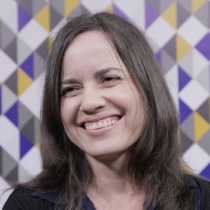The 203 citizen journalists who have participated in Malaysiakini and ICFJ’s training programs don’t always have a lot in common. They are doctors, lawyers, government workers, marketing professionals, engineers, NGO workers, students, retirees, photographers and homemakers. “We get people from all walks of life,” says Maran Perianen, the Malaysia program director. But one thing they do share is their desire for political engagement. “There’s a lot of discontent…they have this awareness that they can do more for their country.”

CJs collaborate closely with Malaysiakini staff.
It’s an awareness that seems to span generations: the oldest citizen journalist is 58, and the youngest is just fourteen. T. Monisa Devi from Penang is the daughter of Thambi Rajan Rajagopal, one of the trainees. One weekend, described Perianen, Rajagopal brought his daughter to the training in Kuala Lumpur as a father-daughter outing. “But when she came, and she saw the amount of things that are being taught,” he said, “she wanted to continue the course…And to our surprise, she actually contributed a video,” one which featured an entrepreneurial program being held at her secondary school in Penang. Using her father’s Flip video camera which he had received during his training, she shot the entire video herself,
interviewing her friends and teachers.
Some citizen journalists are so active that they have made a name for themselves among local politicians. Lilian Chan is a homemaker from Penang who has produced 228 videos, more than any of the other citizen journalists have produced. Now, says Perianen, “the chief minister of Penang checks if Lilian is in the press conference…He will ask the journalists, ‘Is Lilian there? Is she ready? Is the camera ready?”

CJs collaborate closely with Malaysiakini staff.
Others have become so enthusiastic about their work that they have decided to make a career out of it.
Christine Chan, a former corporate consultant, took a training course and then started a fellowship with Malaysiakini. Now, she is employed there as a full-time journalist. “It kind of just happened,” says Chan of her new day job. “When I joined the training…I was taught a lot of things in journalism—how to be responsible, how to write well, and how to present your work well and all that…and I just got to the realization that this is what I want to do, at least for now.” See Christine’s videos
here.
For those who continue to pursue their careers while producing videos, being a citizen journalist can present unique challenges and opportunities. “Normally they’ll use their weekends to work on the projects,” explained Perianen. But at the same time, their professions can inform their stories. As Rajeswari Raman, a research assistant for the Malaysian Trade Union Congress, explained, “My work is already in workers’ rights…we fight for the workers…so it doesn’t matter if it’s migrants or domicile workers or whoever it is…I already have some kind of link on that.”

CJs collaborate closely with Malaysiakini staff.
And, says Perianen, “though our journalists are bound by so many regulations, our CJs, they are more daring. They can just go and walk up to anyone and question them.” Adds Chan, “People who actually choose to become citizen journalists- you know they’re passionate about it, you know they’re not doing it for the money….You’re doing something that you want to do for the community, and I think it can’t get more real than that.”
Meet the rest of Malaysiakini's Citizen Journalists here.

